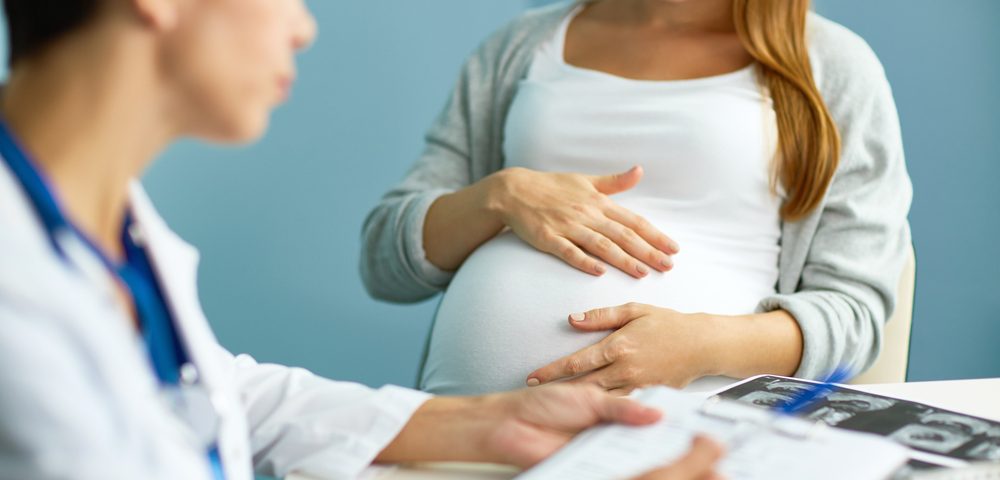Assisted reproduction techniques such as in vitro fertilization pose severe risk of placenta previa for women with endometriosis, a new review by a group of Italian researchers warns.
Placenta previa occurs when the placenta covers the cervix, or uterus outlet. It can be managed with cesarean sections in healthy women, but poses a serious risk to those with endometriosis, particularly those with severe and deep infiltrating disease. A cesarean delivery can be complicated by endometrial lesions that stitch organs in the abdominal cavity together.
A group of researchers at the University of Milan in Italy published their review and commentary in the article, “The ominous association between severe endometriosis, in-vitro fertilisation, and placenta praevia: Raising awareness, limiting risks, informing women.” They also underscored that physicians in in vitro fertilization clinics need to be aware of the specific risks for women with endometriosis.
“The short-term goal of maximising reproductive success per embryo transfer, which is rewarding for both doctors and patients, appears here particularly short-sighted. In women with deep infiltrating endometriosis, the safety of the ART [assisted reproduction technique] procedure is certainly no less important than its efficacy,” the research team wrote.
The commentary was published in the journal BJOG: An International Journal of Obstetrics & Gynaecology.
Risks adding up
The placenta is a blood-rich tissue that provides nutrition to a growing fetus. But when it obstructs the uterus outlet, it presents a risk. If undiagnosed during pregnancy, a vaginal delivery will cause severe bleeding, which can also occur during pregnancy.
This requires an acute cesarean section, sometimes accompanied by the removal of the uterus.
Earlier studies show that the risk of placenta previa in women with endometriosis is up to six times higher than in women without the disease.
Some studies also show that women with a severe form of the disease are at even greater risk, with one study reporting the risk for women with severe endometriosis is 40 times greater than in women without the disease. In addition, the location of endometrial lesions seems to play a role, as women with rectovaginal lesions were more likely to have a dislocated placenta than those with other lesions.
Meanwhile, researchers dealing with assisted reproductive techniques suggest that women who have an assisted pregnancy are also at increased risk.
Other studies exploring outcomes of assisted reproduction among women with endometriosis show that the two risk scenarios add up to an even greater risk, with some noting that placenta previa occurs in up to 20 percent of women with endometriosis who have an assisted pregnancy.
While placenta previa can be manageable in healthy women, it can prove fatal in a woman with endometriosis. Surgical interventions, including delivery by cesarean section, might turn out to be very difficult if endometrial lesions prevent access to the uterus. If a woman starts bleeding heavily, the required removal of the uterus might be challenging, and prove life threatening, the Italian researchers wrote.
Preventing poor outcomes
In addition to highlighting the risks, the researchers also suggested a range of measures to improve treatment, targeting both patients and healthcare professionals.
Sticking to an in vitro fertilization (IVF) method called elective single embryo transfer (eSET) should be mandatory in women with severe and deep endometriosis, they wrote. Since twin pregnancies bring with them their own risk of placenta displacement, implanting a single embryo would, at least, not increase the risk further, they said.
When a woman with endometriosis is diagnosed with placenta previa, she should invariably be remitted to a specialist center that has experience with both endometriosis and complex obstetric surgery.
And to further limit the risk of a delivery, a planned cesarean section should be performed at a hospital that has access to a blood bank, an interventional radiology unit, and availability of skilled obstetricians, colorectal surgeons, and urologists.
The researchers also said that gynecologists have a responsibility to inform their endometriosis patients about the risks. This is particularly true for physicians providing assisted reproduction, who need to become aware of how placenta previa is a much more serious condition in patients with the disease.
The research team suggested that close collaboration between a woman’s physician, IVF clinical staff, and obstetricians who follow the pregnancy and delivery should be mandatory for women with endometriosis having an assisted pregnancy.
“In fact, the objective of the ART process in this particular group of patients is not only a healthy [infant], but also a healthy mother after delivery,” researchers wrote.
To ensure that happens, counselling women with endometriosis who wish to undergo assisted reproduction is “of utmost importance,” they said. Women should be advised to have only eSET IVF, regardless of the overall burden of treatment and costs, they said.
“Once adequately informed and fully aware, women may choose differently; some may decide to take the risk, but others may consider refraining from fertility treatments. It is their decision, not ours, and once pregnant they cannot turn back time,” the team concluded.

